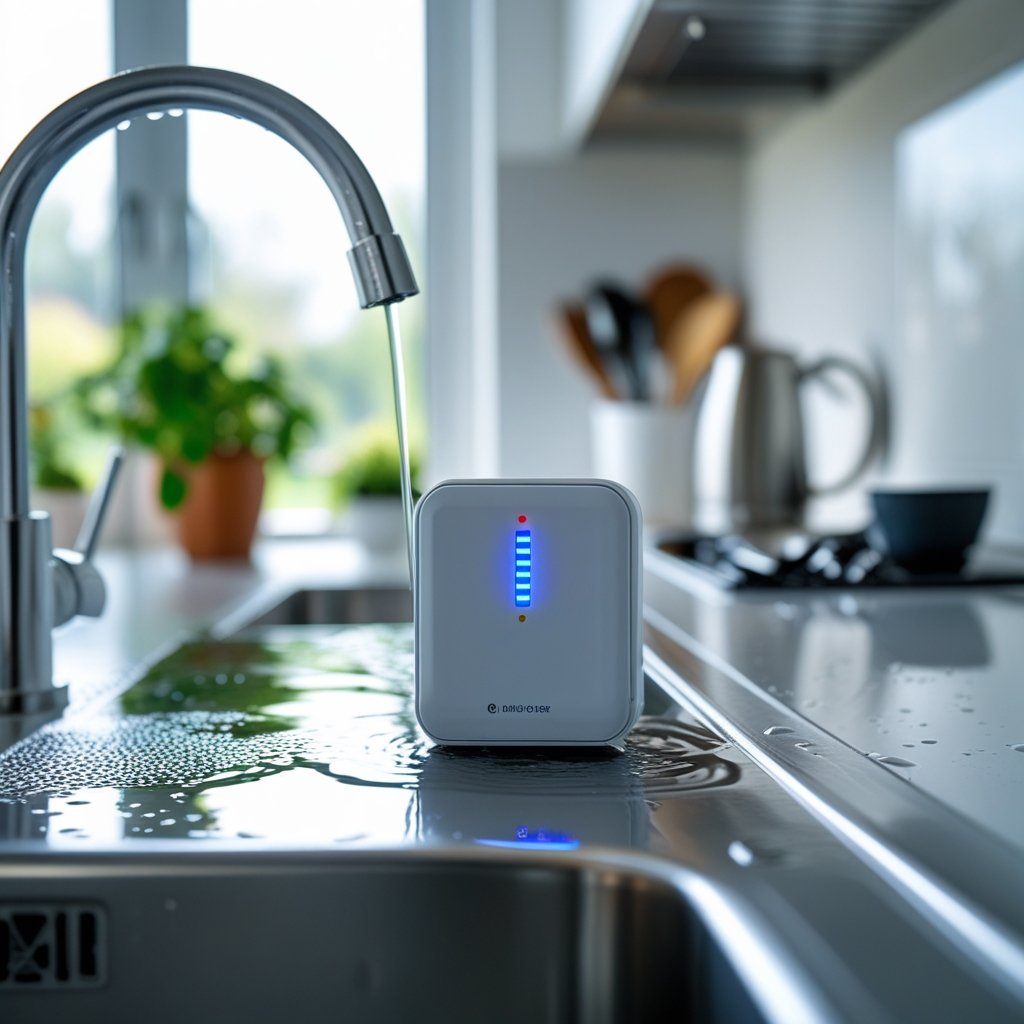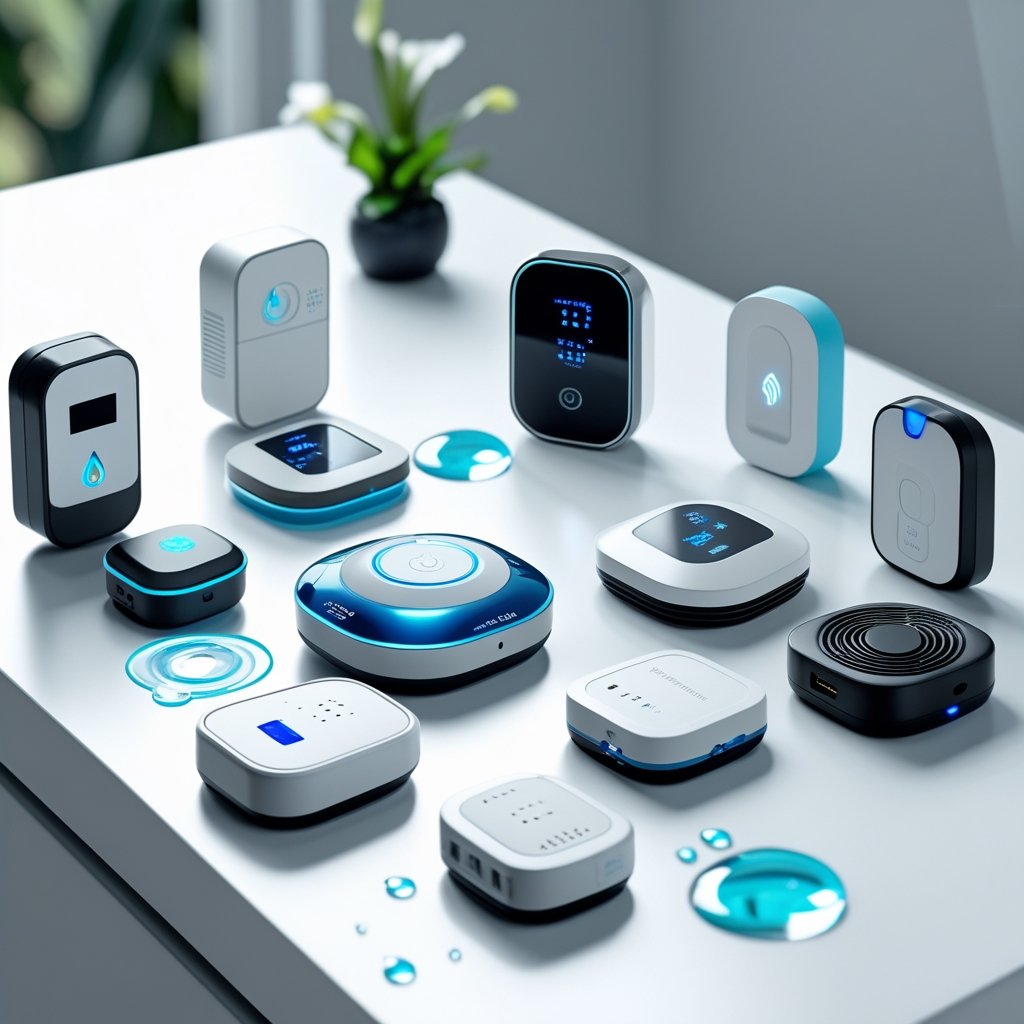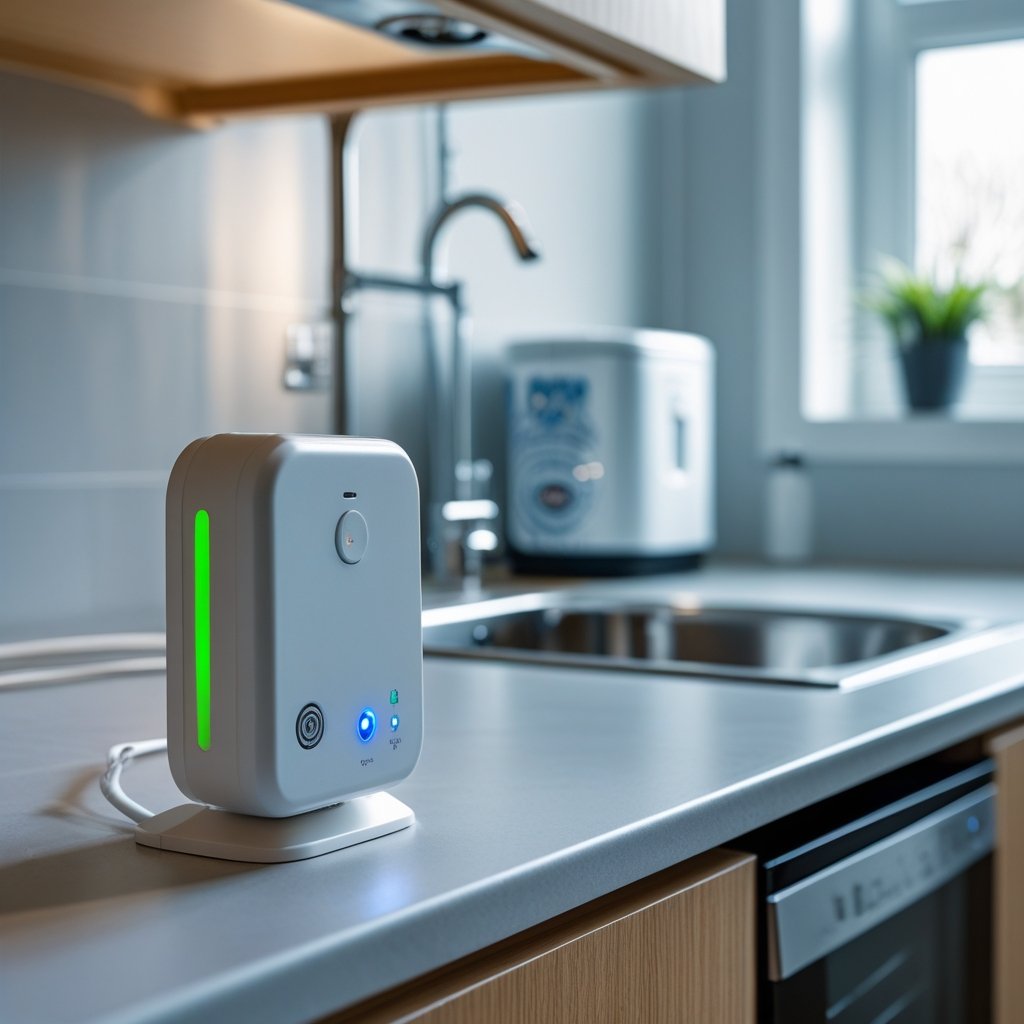Water damage can be costly and disruptive, but modern technology provides simple solutions for early detection. The best water leak detectors offer reliable alerts, rapid response to leaks, and peace of mind for homeowners seeking to prevent costly incidents. Devices now monitor more than just leaks, with some sensors also tracking temperature and humidity to give a comprehensive picture of the environment.

Many of today’s water leak sensors, such as those highlighted in reviews of the best water leak detectors, feature smart connectivity and powerful alarms, ensuring users are notified immediately of any problems. This proactive approach helps people act quickly, preserving property and reducing stress.
Choosing the right device can make all the difference, whether safeguarding a flat from minor drips or a home from serious flooding.
Why Water Leak Detectors Are Essential for Peace of Mind
Water leak detectors play a vital role in preventing hidden leaks from turning into emergencies. Early detection minimises risk to property and offers security for homeowners concerned about water damage and repair costs.
Reducing Stress Through Leak Detection
Water leak detectors provide reassurance by continuously monitoring for unexpected leaks in areas like kitchens, bathrooms, and basements. When a leak occurs, these sensors immediately alert the homeowner, either via smartphone notifications or an alarm, minimising uncertainty and stress associated with hidden infrastructure problems. This instant notification means rapid action can be taken, addressing the issue before it escalates.
Key benefits include:
- Real-time alerts for prompt intervention
- Early discovery of issues often missed until visible damage appears
- Reduction in insurance headaches, as minor leaks are addressed before claims become necessary
Smart water leak detection systems often feature automatic water shutoff functionality. Devices that combine sensors with shutoff valves can halt the water supply as soon as a leak is detected, further reducing stress for homeowners and offering a reliable layer of protection, even when nobody is home.
Preventing Costly Water Damage
Unnoticed water leaks can result in severe structural damage, mould growth, and expensive repairs. A quality water leak detector helps prevent these problems by catching leaks in their earliest stages. This early warning is crucial, as even small drips can lead to significant harm over time.
Installing a smart water leak detector is a cost-effective investment. These systems continuously monitor pipes and appliances known for leakage, offering peace of mind by limiting the potential for large-scale destruction. According to recent findings, homes with leak detection systems are less likely to suffer from extensive water damage, which can save thousands in repairs and lower home insurance premiums.
Many modern detectors use advanced sensor technology and integration with mobile apps, making it possible for users to respond instantly to any alerts and prevent unnecessary loss or costly property damage.
Types of Water Leak Detectors

Selecting the right water leak detector depends on a home’s needs, technical abilities, and budget. Whether seeking simple alerts or full automation, these devices range in complexity and function.
Smart Water Leak Detectors
Smart water leak detectors connect to Wi-Fi and synchronise with a smartphone app. This allows users to receive real-time notifications if a leak is detected, even when away from home. These devices often support integration with smart home systems, making monitoring more convenient.
Many models support multiple sensors placed throughout a property. This broadens coverage to basements, kitchens, or bathrooms. Some smart leak detectors can track environmental data like temperature and humidity, helping to spot early signs of potential issues. For 2025, key features include robust alerts, multi-point sensors, and easy installation, as discussed on smart water leak detector features.
Key Features:
- Mobile alerts: Notifications sent directly to phones.
- Integration: Compatibility with existing smart home platforms.
- Multi-sensor support: Expandable units to cover more rooms.
Standalone Devices
Standalone water leak sensors function without Wi-Fi or apps. They are best for those seeking a straightforward solution that requires no internet connection. These devices are typically battery-operated and emit a loud sound when water is detected.
Placement is crucial; most sensors are compact, suitable for fitting under appliances or in confined spaces. They offer limited monitoring to the immediate area, so several detectors might be necessary for larger homes. Maintenance usually involves periodic battery checks and repositioning as needed.
Pros:
- Simple installation: No setup with apps or hubs.
- Low cost: Budget-friendly for multiple units.
- No connectivity needed: Functions during power or network outages.
Water Leak Sensors With Automatic Shutoff
Water leak sensors with automatic shutoff integrate detection with direct action. When these devices identify a leak, they trigger a connected valve to stop the water supply, helping to prevent extensive damage. This technology is particularly beneficial for main water lines or high-risk zones.
Systems can be controlled manually or programmed to shut off automatically, adding a layer of security for remote properties or frequent travellers. Premium models, such as those featured in leading water leak detection systems, combine these features with smart monitoring and detailed usage reports.
Advantages:
- Automatic response: Immediate action to reduce water damage.
- Remote control: Manage water flow via app or dashboard.
- Long-term savings: Prevents costly repairs by limiting water exposure.
Top Features to Consider

Choosing the right water leak detector requires attention to key features that affect daily convenience and response times. Devices vary in how they notify homeowners, interact with smart home systems, and how often they require maintenance like battery replacement.
App and Email Notifications
Water leak detectors equipped with app notifications let users receive alerts directly on their smartphones, wherever they are. This ensures prompt awareness, even when not at home. Most reliable detectors offer iOS and Android support, enabling users to customise alert types and push notification settings.
Some devices also send email alerts, acting as a useful backup in case push notifications are missed or if multiple users need to be kept informed. These notifications often include time stamps, location details, and suggested next steps. This feature becomes crucial for property owners managing more than one location, or for those who want records of incident history.
Look for models that offer settings to tailor notification preferences. These settings help prevent excessive alerts for minor humidity changes, reducing unnecessary stress.
Audible Alarms for Immediate Alerts
An audible alarm serves as the first line of defence when a leak is detected and someone is present in the building. Many top detectors include built-in sirens that sound at 85 decibels or more, drawing immediate attention to the problem. Some models combine both loud alarms and immediate mobile alerts.
This feature can be crucial in busy households or office environments where notifications could be missed. Check if the device allows volume adjustment, as some alarms may be disruptive in quiet areas, while others may need to penetrate noise in larger or industrial spaces.
In multi-floor properties, the ability to connect multiple detectors ensures that alarms can sound in multiple areas at once. This layered alert system makes sure leaks are addressed swiftly, minimising water damage.
Battery Power and Battery Life
Cordless water leak detectors rely on battery power, offering flexibility in placement. Battery life varies significantly, often ranging from one to five years depending on the device and usage. Some models use AA or AAA batteries, while others use sealed lithium cells.
A key consideration is low-battery warnings, which typically arrive through app notifications or on-device lights. Timely alerts prevent lapses in protection. Detectors with longer battery life reduce maintenance and the risk of forgetting to replace batteries.
Devices with energy-saving designs or low-power sensors maximise operational time between changes. Some detectors even offer user-replaceable batteries, making upkeep simpler and more cost-effective. Prioritise these options for settings that are difficult to access regularly.
Integration With Smart Home Systems
A detector that integrates with smart home platforms like Alexa, Google Home, or Apple HomeKit provides an extra level of convenience. Integration enables automation—such as shutting off water valves or activating lights—upon leak detection.
Smart home compatibility means that all notifications can be managed from a single app, reducing the clutter of separate devices and apps.
Some systems also allow multiple users to access notifications and device controls, ensuring all household members are aware of urgent situations. Check that the detector supports the smart ecosystems already in use in the home to prevent compatibility issues. This interconnected approach helps ensure a faster response when every minute counts.
Installation and Setup
Water leak detectors today are designed with user convenience in mind, allowing for quick installation and minimal setup time. Many models can be integrated into a smart home system or used as standalone units, depending on the user’s needs and technical confidence.
Easy to Install Solutions
Most water leak detectors feature a tool-free installation, requiring little more than placement in high-risk areas such as under sinks, near washing machines, or by toilets. Devices like YoLink and other leading brands prioritise easy setup and compact designs so they fit discreetly where leaks are most likely to happen.
Wireless units typically run on batteries, eliminating the need for mains wiring. Some systems include adhesive strips or mounting brackets, making it simple to secure sensors vertically or horizontally. Many products also come with clear printed guides or in-app instructions, reducing confusion for those new to smart home devices.
It’s important to consider placement: putting sensors in multiple critical areas maximises coverage and detection. Practical options for installation are detailed in this guide to critical installation areas.
Simple Setup Processes
Setting up modern leak detectors typically involves scanning a QR code with a companion app or following a simple pairing sequence. For smart systems, the app may prompt the user to name the sensor and assign it to a room, streamlining notifications and monitoring.
Cloud-based platforms often provide real-time alerts to smartphones or other connected devices, enabling fast response even when away from home. Most reputable brands offer step-by-step walkthroughs within their apps, ensuring accessibility for users of all skill levels.
The use of mobile apps for setup simplifies firmware updates and troubleshooting. Devices like YoLink have earned user praise for swift and reliable alert set-up, with some models ready to use out of the box in under ten minutes. For renters or frequent movers, these easy-to-install and quick-to-set-up options add significant value.
Best Water Leak Detectors for Specific Needs
Water leak detectors come in a range of designs tailored to different types of properties. Choosing the right model depends on property size, number of water sources, and connectivity options.
Detectors for Large Properties
For larger homes or commercial spaces, coverage and scalability matter most. Owners should look for systems that support multiple sensors and centralised monitoring. Models offering wireless connectivity, like Wi-Fi or Zigbee, allow users to place sensors throughout distant areas such as basements, lofts, and garages.
Some of the best water leak detectors for expansive properties are equipped with long battery life. SEBSON Water Alarm Mini GS153 is notable for its 10-year battery life and reliable performance. Integration with automated water shut-off valves adds another layer of protection, reducing potential water damage by halting flow the moment a problem is detected.
Many systems feature smartphone apps, providing instant alerts wherever the user is. Below is a quick overview of features beneficial for large properties:
| Feature | Benefit |
|---|---|
| Multiple sensors | Wide area coverage |
| Mobile alerts | Immediate notifications |
| Automatic shut-off | Reduced water damage |
| Extended battery life | Minimal maintenance |
Options for Apartments and Small Spaces
For flats or smaller spaces, compact water leak detectors with strong alert systems are ideal. Devices like the SwitchBot Water Leak Detector, which emits a 100-decibel alarm, draw attention to leaks quickly, even in busy households.
Installation is straightforward; most detectors simply rest on the floor near water heaters, sinks, or washing machines. Smart models, such as the SwitchBot WiFi Water Sensor connect to Wi-Fi, enabling prompt alerts to the user’s phone regardless of location. For tenants, battery-operated devices with adhesive backing are preferred, as they do not require permanent installation.
Budget-conscious buyers will find effective options under £25. Many modern detectors provide reliable, fast notifications and easy setup.
Maintaining and Testing Your Water Leak Detectors
Proper care ensures reliable performance from any water leak sensor. Regular maintenance and functional checks help detect issues early, prevent avoidable water damage, and maximise the detector’s lifespan.
Checking Battery Levels
Leak detectors typically run on batteries, and monitoring battery life is crucial. Most modern detectors include a visual or audible low battery warning. However, it is a best practice to check battery power manually every few months, especially in critical areas like basements or under sinks.
A routine schedule can prevent unexpected power loss. Marking dates for battery checks on a calendar or setting digital reminders can be helpful. Use only the battery type recommended by the manufacturer to avoid malfunctions.
A table like the one below helps track battery changes:
| Detector Location | Last Checked | Battery Type | Next Check |
|---|---|---|---|
| Kitchen Sink | 10/04/2025 | AA Alkaline | 10/07/2025 |
| Basement | 15/03/2025 | CR2 Lithium | 15/06/2025 |
Always dispose of old batteries safely. Some smart detectors will even send notifications for low battery levels, offering additional peace of mind.
Routine Sensor Testing
Regular testing of water leak sensors confirms that alarms and connectivity are working as intended. Monthly testing is recommended by industry experts to ensure prompt detection and system reliability. Most manufacturers include a test button, but a practical test involves placing a small amount of water beneath the sensor to check for immediate response.
Cleaning the sensor during these checks helps avoid dust or debris hindering detection. A soft, dry cloth usually suffices for this. It is important to wipe away any mineral deposits or water stains that could affect sensitivity.
Smart devices should be tested for connectivity by triggering an alert and confirming that notifications arrive on connected devices.
